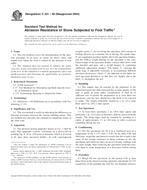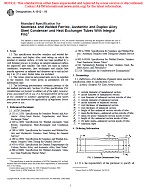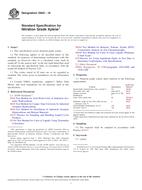1.1 This test method describes a procedure for counting total numbers of bacteria present in electronics-grade purified water systems. An on-line, large volume sampling technique is used with acridine orange epifluorescence microscopy. This procedure is applicable to industrial and environmental water systems with small amounts of detrital material.
1.2 The analytical sensitivity associated with this method is dependent upon the sample volume. Sensitivities of ∧lt;20 cells/100 mL can be obtained on a routine basis (1). A sample size of 5 L or more is required to obtain this sensitivity.
1.3 The procedure is relatively rapid to perform: total bacteria counts can be obtained within 60 min from the start of sampling.
1.4 Viable, nonviable, and nonculturable bacteria are stained by the acridine orange dye. This procedure does not, however, differentiate between these three groups of bacteria.
1.5 Detrital material, algae, and fungi may also fluoresce when stained with the acridine orange.
1.6 Performance of this procedure requires experience in light microscopy. The microscopist must be capable of distinguishing bacterial cells from other, fluorescing particulate matter. Refer to Mittelman et al. (1) for color photographs on cell morphology.
1.7 This procedure is adaptable for use with image analysis equipment (2). The use of image analysis equipment will increase the rate at which the filter can be examined.
1.8 The values stated in SI units are to be regarded as the standard. The values given in parentheses are for information only.
1.9 This standard does not purport to address all of the safety concerns, if any, associated with its use. It is the responsibility of the user of this standard to establish appropriate safety and health practices and determine the applicability of regulatory limitations prior to use.
Product Details
- Published:
- 01/01/1994
- Number of Pages:
- 5
- File Size:
- 1 file , 47 KB


